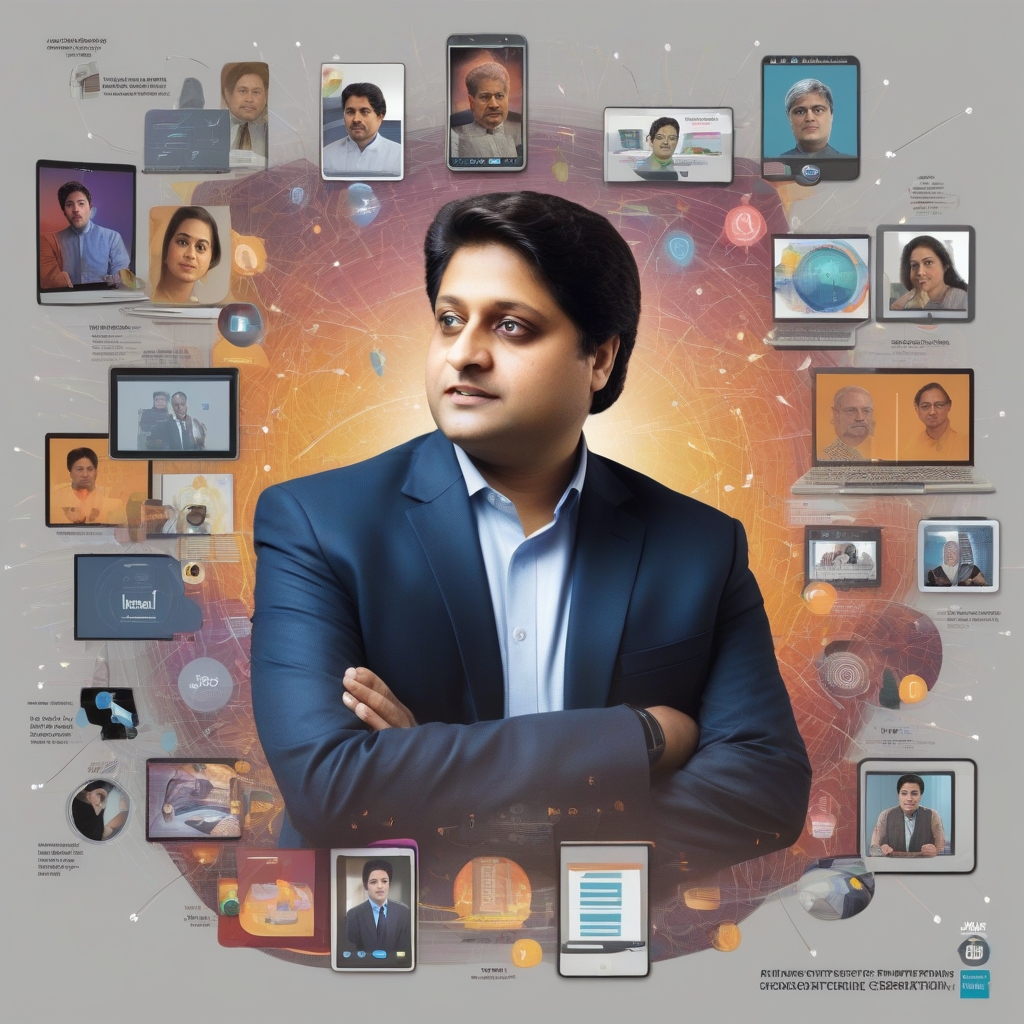The Intersection of AI and Content Creation
The realm of content creation is on the brink of transformation, guided by the pivotal integration of Artificial Intelligence (AI). With an increasing emphasis on digital reach and the insatiable demand for innovative content, AI is emerging as a revolutionary tool that’s reshaping how content is created, curated, and consumed. This period of technological advancement was recently highlighted during an insightful discussion led by Shri Jyotiraditya M. Scindia, the Hon’ble Minister for Communications, where top creators and AI experts convened to delineate AI’s transformative potential in this domain.
AI as a Catalyst for Creative Innovation
During the meeting, it was emphasized that AI is not just a tool but a catalyst that is unlocking unprecedented potentials in content creation. Traditional methods, which often required labor-intensive processes, are now being supplemented with AI-driven solutions that streamline and enhance the creative workflow. Here’s how AI is playing a pivotal role:
- Content Generation: AI algorithms are now capable of generating text, audio, and visual content that can mimic human creativity, opening doors for creators to explore new horizons.
- Personalization: AI’s ability to analyze consumer data offers creators the power to tailor content to individual preferences, thus enhancing engagement.
- Efficiency and Scalability: Content creation processes, which were once time-consuming, are now expedited by AI, allowing higher volumes of content with consistent quality.
Enhancing Creativity Through AI Collaboration
AI is often perceived as a replacement for human effort, but this modern confluence showcases it as a collaborator. For content creators, AI serves as an assistant, offering tools that enhance creative capabilities rather than supersede them.
- Idea Generation: AI tools can help creators find inspiration by analyzing trends and generating myriad content ideas based on current data and consumer interests.
- Content Editing: Advanced AI solutions are assisting creators with editing tasks, suggesting improvements based on styles, themes, and tones preferred by the target audience.
- Automation of Repetitive Tasks: Tasks like scheduling posts, managing comments, and performing keyword analysis can be easily handled by AI, freeing up human resources for more creative pursuits.
AI in Video and Image Creation
Video and image content creators are witnessing a revolution with AI’s intervention. Production processes for video and image content are significantly advanced with AI innovations.
AI Video Tools
AI drives video manipulation by enabling automatic editing, scene detection, and effects application for a refined output. These tools can cut down what used to be days of editing into a matter of hours. Furthermore, AI-powered analytics help creators understand viewer behavior, refine their strategies, and create more engaging visual stories.
AI in Image Design
Image creation, too, has seen leaps forward with tech like neural networks modeling artworks or enhancing picture quality beyond traditional capabilities. AI’s role in this domain ranges from automating mundane design processes to enabling the creation of new styles that push the envelope of conventional aesthetics.
The Government’s Role in AI-Driven Creative Ecosystems
The discussion, spearheaded by Shri Jyotiraditya M. Scindia, reflects the government’s active role in fostering environments where AI can thrive in the creative spheres. Mr. Scindia eloquently pointed out the importance of regulatory frameworks that ensure ethical AI usage and protect creative integrity while promoting innovation and collaboration.
Regulatory Support for AI Advancement
The government aims to lay down structures to safeguard innovation against misuse, ensuring AI tools are developed and deployed responsibly. Their support extends to:
- Investment in AI Research: By nurturing AI startups and research, the government ensures a continuous flow of new ideas and technologies into the creative market.
- Skill Development Initiatives: Training programs are being proposed to help content creators adapt to AI tools, ensuring they can leverage these advancements effectively.
- Collaboration Platforms: Creating forums and platforms that encourage active collaboration between AI developers and content creators for continuous improvement and innovation.
Challenges and Considerations
While AI presents numerous opportunities, its integration into content creation isn’t void of challenges. Key issues revolve around maintaining authenticity, understanding AI’s ethical boundaries, and data privacy. Content creators and regulators alike are tasked to find a balance that allows technological benefits without compromising the human touch in content that consumers trust and value.
Ensuring Content Authenticity
A recurring concern is ensuring that AI-generated content remains authentic and aligned with human values. Strategies involve setting standards that regulate AI-generated outputs and emphasize transparency about AI involvement in content production.
Addressing Data Privacy
With AI’s reliance on large datasets, creators must navigate data privacy laws diligently, ensuring all consumer information is collected and used in compliance with existing legal frameworks without infringing privacy rights.
Conclusion: Embracing AI’s Role in the Future of Content Creation
The convergence of AI with content creation heralds a transformative era where the fusion of technology and human creativity can achieve new heights. Present gatherings, such as those participated in by Shri Jyotiraditya M. Scindia alongside AI and creative industry trailblazers, underline a pivotal shift towards embracing AI not just within a technological sphere, but as a transformative force that is redefining content creation aesthetics and methodologies. The future lies in the synergy between AI and human creativity, where both elements coexist to forge innovative pathways in the ever-evolving world of content creation.

Leave a Reply